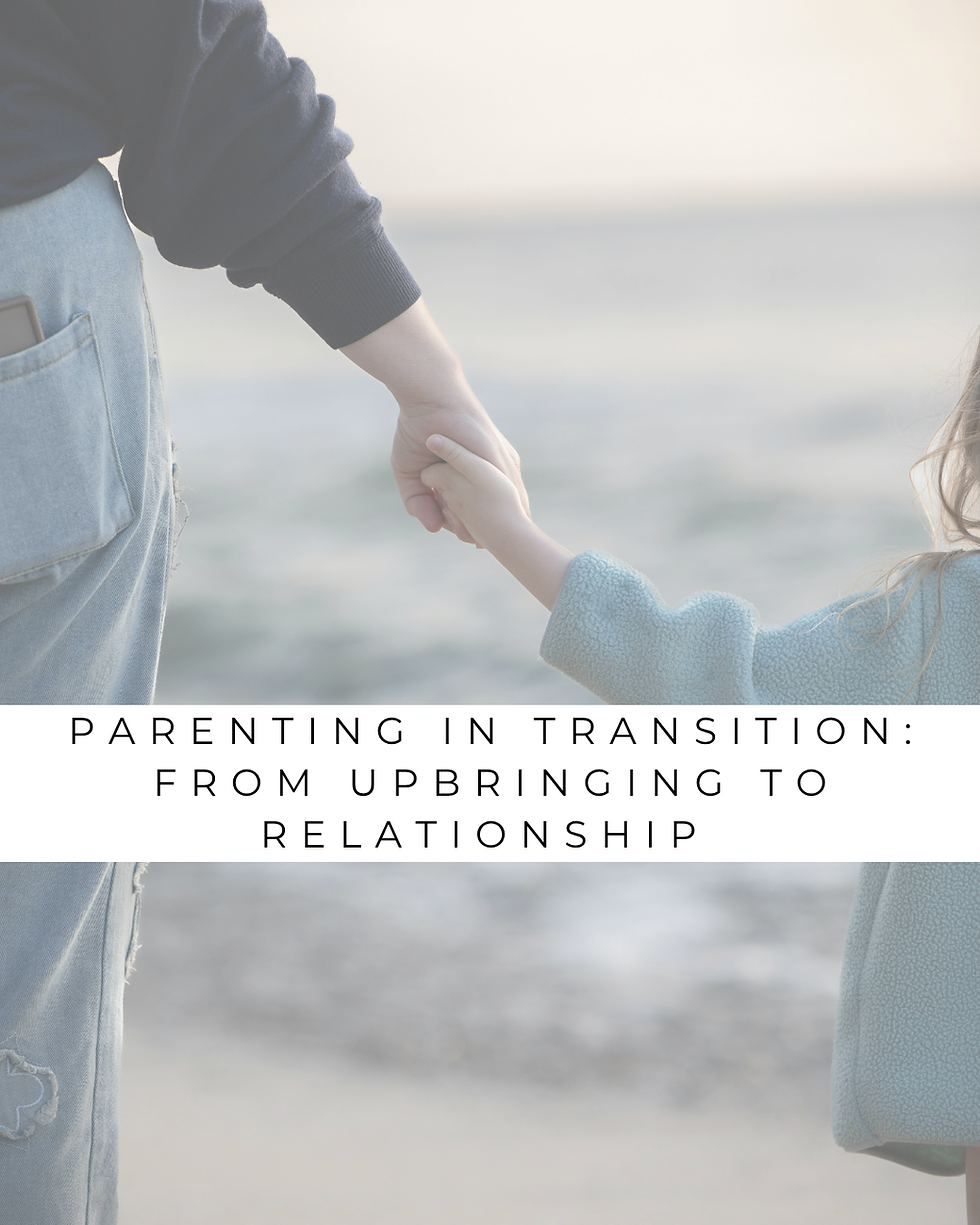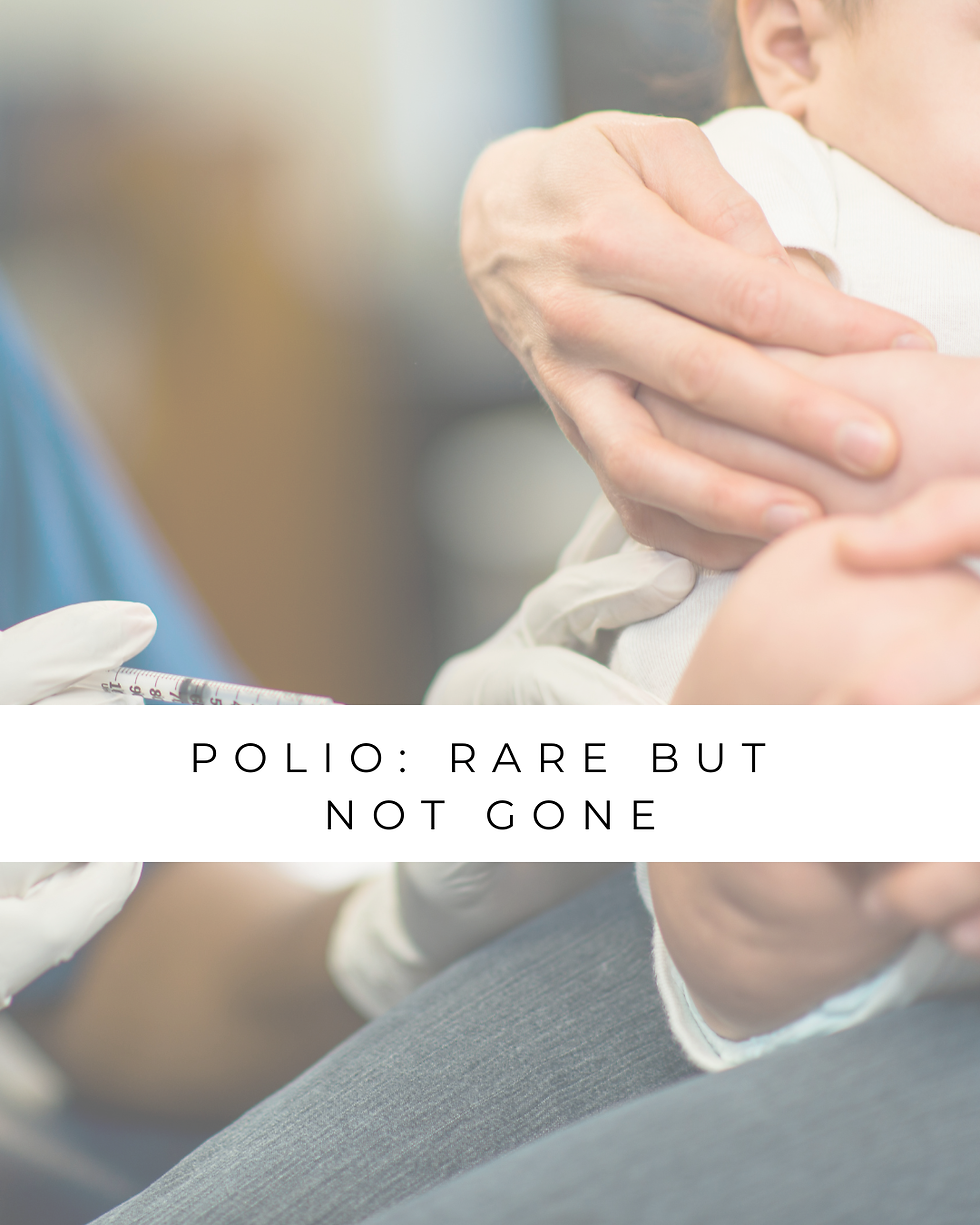RSV in babies: current information and how you can protect your baby
- Johanna

- Oct 6
- 7 min read
Updated: Oct 7
Respiratory syncytial virus, or RSV, is one of the most common pathogens causing respiratory infections in children. In Germany, RSV primarily occurs during the winter months, from October to March. Almost all children experience at least one RSV infection in the first two years of life.
While older children and adults typically experience only mild symptoms similar to a cold, infants, especially those under six months of age, and children with pre-existing conditions can develop severe RSV infections, including bronchiolitis or pneumonia.
It's normal for parents to feel concerned; however, it's important to remember that most babies recover completely. There are effective methods to support their recovery.

© Mylittlesprout
Transmission and history
RSV is transmitted through droplets from coughing and sneezing, as well as through direct contact with hands or objects.
The incubation period is two to eight days.
Individuals with RSV are typically contagious for three to eight days; in young children, contagiousness can last up to four weeks. The child recovers , but can still transmit RSV viruses through coughing, sneezing, or nasal secretions.
Why is RSV serious for babies and what are the typical symptoms?
An infection usually lasts only a few days, but can also last for several weeks.
Fever
stuffy or runny nose
Cough
sore throat
Shortness of breath with rapid breathing, retractions between the ribs or below the sternum
Drinking and sucking problems
In severe cases, paleness or bluish discoloration of the skin and lips (cyanosis)
For small babies, an RSV infection can be severe because of:
Narrow airways: Even small amounts of mucus can make breathing difficult.
Immature immune system: Infants cannot fight viruses as effectively.
Rapid worsening: A simple cold with mucus can turn into breathing difficulties within hours.
In severe cases, long-term hypersensitivity of the bronchi can persist.
Treatment of RSV in babies
Currently, there is no specific therapy that directly targets the RSV virus. To date, treatment for RSV has primarily been supportive, focusing on alleviating symptoms and supporting the child until the infection clears up on its own.
Rest: Plenty of rest, a smoke-free environment, and loving care support recovery.
Fever reduction: If necessary, fever can be treated with fever-reducing medication (such as paracetamol, after consultation with your doctor).
Fluids and nutrition: Since many babies struggle with drinking, it's essential to ensure adequate fluid intake. Sometimes babies in the hospital need to receive IV fluids or tube feedings.
Nasal decongestant: Using a saline nasal solution and regular suctioning can help ease breathing.
Moist inhalations are no longer recommended. Studies show no effect. However, inhalation with medication prescribed by a doctor can help ease breathing.
Respiratory support: Particularly severe cases sometimes require inpatient treatment, the administration of oxygen or intensive therapy.
Antibiotics don't help with RSV because it's a virus. They are only used if there is also a bacterial infection.
Most children recover fully within a few days to weeks. However, it's important to seek immediate medical attention if you notice signs of shortness of breath, bluish lips, or severe difficulty drinking.
Why is RSV so important
RSV is the most common cause of hospitalizations for infants during the winter. Pediatric hospitals experience severe outbreaks of RSV every year. Babies under six months of age, premature babies, and children with pre-existing conditions such as heart or lung disease or immune deficiencies are particularly at risk. Reinfections are also possible later in life, but the symptoms are usually much milder.
Protection options: STIKO recommendation
There is currently no traditional vaccination for babies. However, passive immunization with the antibody nirsevimab (trade name Beyfortus) has been available since June 2024.
Nirsevimab reduces the risk of severe RSV disease in infants by about 80 percent, effectively protecting against hospitalization and intensive care.
This antibody is administered once, similar to a vaccination, and works immediately.
Since no immune memory is formed, protection is not permanent, but only for one season.
All infants can be protected with nirsevimab during their first RSV season:
RSV vaccination during pregnancy is not currently recommended by STIKO, as further data on efficacy and safety in widespread use are still being evaluated. However, an approved RSV vaccine has been available for pregnant women since 2023. The goal is for the mother to develop antibodies after vaccination, which are then passed on to the child via the placenta. This provides the newborn with so-called nest protection and is already protected during the first months of life, which is why an additional dose of Beyfortus for the infant is not necessary.
Babies born between October and March receive the antibody as early as possible, often directly after birth, upon discharge from the hospital, or during the U2 (3rd-10th day of life).
Babies born between April and September will receive the gift in the fall (September to November) before the season begins.
If the dose is missed at the beginning of the season, it should be given during the season.
What applies to children outside the standard time window?
Because the RSV season varies from year to year and from region to region, decisions are made on an individual basis for infants born before April, up to their first birthday, who have not yet received prophylaxis. Health insurance coverage plays an important role here. Therefore, parents should consult their health insurance provider early on to clarify their individual eligibility for RSV prophylaxis.
Dosage:
50 mg for infants under 5 kg
100 mg for infants weighing 5 kg or more
Typically, a single dose per season is sufficient.
For children at risk (e.g., premature babies, children with heart or lung disease, Down syndrome, neuromuscular disorders, or immune deficiencies), an additional dose in a second season may be advisable.
Costs and Reimbursement
One dose of Beyfortus currently costs approximately €450, regardless of whether it is 50 mg or 100 mg (as of October 2025). In addition, medical services can be billed according to the German Fee Schedule (GOÄ).
Statutory health insurance (GKV):
Since September 13, 2024, infants have been entitled to RSV prophylaxis until the end of their first year of life. The costs of the medication and the medical treatment are covered; there are no additional costs for parents.
Privately insured (PKV):
Private health insurance generally covers RSV prophylaxis, but the conditions depend on the plan. Parents should therefore consult with their child beforehand. Two options are available:
The pediatrician’s office purchases Beyfortus directly and bills.
A private prescription is issued, parents pick up the dose from the pharmacy (approximately €450), and submit the pharmacy receipt and doctor's bill to the private health insurance provider.
What parents should consider
Get informed early and plan the timing of the dose well in advance; it depends on the month of birth.
If you are unsure, please contact your health insurance provider or private insurer in a timely manner.
Take further protective measures: maintain good hand hygiene, avoid contact with sick people, maintain a smoke-free environment, and avoid crowds.
Take symptoms seriously: Shortness of breath, rapid breathing, difficulty drinking, or blue lips are an emergency and require immediate medical attention.
Exciting news from studies: How effective is Nirsevimab really?
Clinical studies confirm how effective nirsevimab can be in protecting infants from severe RSV disease.
France: In a very large study of over 82,000 infants, nirsevimab reduced the risk of hospitalization for RSV by 65%. Severe cases were also significantly reduced: admissions to intensive care units by 74%, and cases requiring ventilation or oxygen by 66–67% (Jabagi et al., 2025).
Spain (Navarra): This study demonstrated 88.7% efficacy in preventing PCR-confirmed RSV infections (Ezpeleta et al., 2024).
Spain (Catalonia): RSV-related hospitalizations decreased by 74%, and intensive care admissions even decreased by 85% (Perramon-Malavez et al., 2025).
Spain (Madrid): In another large cohort study, efficacy was 93.6% against hospital admissions and 94.4% against intensive care admissions – although protection declined somewhat over the course of the season (Barbas del Buey et al., 2024).
Systematic reviews and meta-analyses also confirm these results:
Premature infants benefited from a significant risk reduction for RSV infections requiring medical treatment (odds ratio 0.25) and for hospital admissions (OR 0.27) (Wang et al., 2025).
A multi-country review of over 11,000 children also showed a clear reduction in RSV-related disease and hospital admissions (Tanashat et al., 2025).
The largest analysis to date, encompassing 32 real-world studies, demonstrated that nirsevimab reduces the overall risk of RSV-related hospitalization by 83% (Sumsuzzman et al., 2025).
Conclusion
RSV is a common but potentially dangerous respiratory infection in childhood. With the introduction of nirsevimab, effective protection for all babies during their first RSV season has been available since 2024. Nirsevimab has not only demonstrated convincing results in clinical trials but also demonstrated its high efficacy in everyday pediatric hospitals worldwide. For parents, this means that this new prophylaxis can significantly reduce the risk of severe RSV disease in babies.
Status: 10/2025
Sources/Resources:
Federal Ministry of Health: Protection against RSV infections. https://www.bundesgesundheitsministerium.de/themen/praevention/impfungen/schutz-vor-rsv-infektionen/faq-rsv.html
Robert Koch Institute: https://www.rki.de/DE/Aktuelles/Publikationen/RKI-Ratgeber/Ratgeber/Ratgeber_RSV.html
Infection protection: https://www.infektionsschutz.de/infektionen/erregersteckbriefe/rsv-respiratorisches-syncytial-virus/
Vaccination-info.de : RSV prophylaxis. https://www.impfen-info.de/impfkommen/fuer-kinder-0-12-jahre/rsv-prophylaxe/
https://www.g-ba.de/downloads/40-268-11250/2024-08-15_AM-RL-XII_Nirsevimab_D-1044_ZD.pdf
https://www.kbv.de/praxis/tools-und-services/praxisnachrichten/2024/09-18-extra/RSV-Prophylaxe bei jungen jungen können beginnt - Extended Evaluation Committee sets remuneration?utm_source= chatgpt.com
N. Principi, G. Autore, S. Perrone, S. Esposito (2023): Current and emerging pharmacotherapy for respiratory syncytial virus (RSV) infection in infants. Expert Opinion on Pharmacotherapy.
J. Soto, Ricardo A Loaiza, Sebastián Echeverría, Robinson Ramírez, A. Kalergis (2023): Current and emerging pharmacological treatments for respiratory syncytial virus infection in high-risk infants. Expert Opinion on Pharmacotherapy.
Marie-Joëlle Jabagi, Jérémie F Cohen, Marion Bertrand, Martin Chalumeau, Mahmoud Zureik (2025): Nirsevimab Effectiveness at Preventing RSV-Related Hospitalization in Infants. NEJM Evidence.
Guillermo Ezpeleta, Ana Navascués, Natividad Viguria et al. (2024): Effectiveness of Nirsevimab Immunoprophylaxis Administered at Birth to Prevent Infant Hospitalization for Respiratory Syncytial Virus Infection: A Population-Based Cohort Study. Vaccines.
A. Perramon-Malavez, Eduardo Hermosilla, E. Coma, et al. (2025): Effectiveness of Nirsevimab Immunoprophylaxis Against Respiratory Syncytial Virus-related Outcomes in Hospital Care Settings: A Seasonal Cohort Study of Infants in Catalonia, Spain. The Pediatric Infectious Disease Journal.
JF Barbas del Buey, Jesús Íñigo Martínez, M. Á. Gutiérrez Rodríguez et al. (2024): The effectiveness of nirsevimab in reducing the burden of disease due to respiratory syncytial virus (RSV) infection over time in the Madrid region (Spain): a prospective population-based cohort study. Frontiers in Public Health.
Xiaopeng Wang, Li Kong, Xueou Liu, Panpan Wu, Lulu Zhang, Fangrui Ding (2025): Effectiveness of nirsevimab immunization against RSV infection in preterm infants: a systematic review and meta-analysis. Frontiers in Immunology.
M. Tanashat, M. Abuelazm, Almothana Manasrah, et al. (2025): Efficacy and safety of nirsevimab for preventing respiratory syncytial virus infection in infants: an updated systematic review and meta-analysis encompassing 11,001 participants. Proceedings.
Dewan Md. Sumsuzzman, Zhen Wang, Joanne M Langley, S. Moghadas (2025): Real-world effectiveness of nirsevimab against respiratory syncytial virus disease in infants: a systematic review and meta-analysis. The Lancet Child & Adolescent Health.





